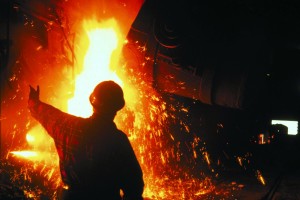By NICOLE KARLIS
 After years of decline, the American Labor Movement is on the upswing: Google contractors in Pittsburgh unionized this year, along with several newsrooms, while other tech companies are in the middle of union struggles.
After years of decline, the American Labor Movement is on the upswing: Google contractors in Pittsburgh unionized this year, along with several newsrooms, while other tech companies are in the middle of union struggles.
Still, unions have a lot of ground to retake, as union membership among American workers has fallen by about 50 percent over the past 35 years; membership peaked in 1954. Unions are, in general, extremely good for the economy: union workers are paid better, treated better, and retire better. So why the fall?
According to new research by the Economic Policy Institute (EPI), America’s decline of unions is likely in part due to the hefty investments employers have put into thwarting unionization efforts, which is fueled by a shadow industry that even the federal government has little information about.
American employers spend an estimated $340 million annually on “union avoidance” consultants and firms to help them stave off union elections. Consultants often report being paid $350 per hour, or more. Some even clock in $2,500 daily rates.
PAID WELL TO PAY OTHERS LITTLE
“I think it is just alarming to me to see the numbers in front of your face that show how well some people are paid to make other people earn less, that to me is shocking,” Ben Zipperer, one of the authors of the report and an economist at the EPI, told Salon.
According to the report, some companies spend millions on union avoidance consultants each year. Laboratory Corporation of America spent an estimated $4.3 million between 2014 and 2018. Mission Foods spent $2.9 million between 2016 and 2017. The Trump International Hotel in Las Vegas reportedly spent $569,000 between 2015 and 2016.
THE CORPORATE GOAL
“The main goal of union avoidance consulting firms is to prevent a union election from taking place—and if that fails, to ensure that workers vote against the union,” the researchers state in the paper.
Zipperer told Salon it’s unclear if this spending is at a historic high, as this kind of data has always been a bit murky and often hard to access — which has made it nearly impossible to calculate the size of this industry. The most comprehensive review of research on the anti-union industry was conducted by the U.S. Department of Labor in 2011, but Zipperer said it only captured about 7 to 8 percent of the industry.
“This speaks to the fact that not only does our Labor law not protect people, and not only is there this shadow industry that we have little information about, but we can’t even collect or maintain the data to really get a handle on this — and the agencies that are supposed to be enforcing and making sure that the promise of Labor law is upheld don’t even have the data to use themselves.”
(Reprinted from Salon. Nicole Karlis is a news writer at Salon. She covers health, science, tech and gender politics. Tweet her @nicolekarlis.)


